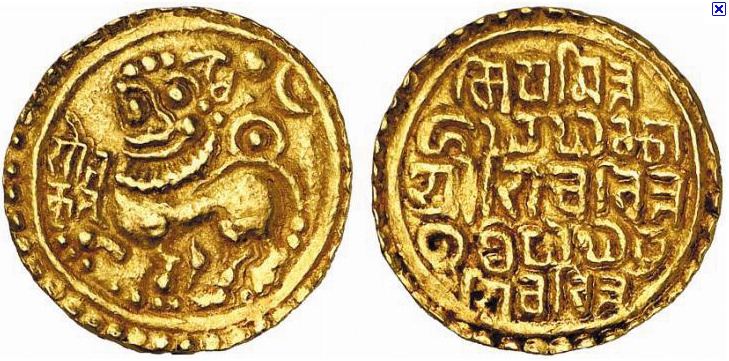 | ||
The Kadambas of Goa were a dynasty during the Late Classical period on the Indian subcontinent, who ruled Goa from the 10th to the 14th century CE. They took over the territories of the Silaharas and ruled them at first from Chandor, later making Gopakapattana their capital. Their modern descendants still live in Goa.
Contents
Origins
According to the Talagunda inscription found in Shimoga in Karnataka, the Kadambas are of Brahmin origin, descended from Mayurasharma.
Establishment of a separate dynasty
As a feudatory of the Chalukyas, Kadamba Shasthadeva was appointed as the Mahamandaleshwar of Goa by the Chalukya king, Tailapa II. According to the Savai vere inscription, the Kadambas were allies of the Chalukyas, whom they helped to defeat the Rashtrakutas. Shashthadeva later conquered the city of Chandrapur from the Shilaharas and established the Goan Kadamba dynasty in 960 CE.
Gopakapattana
King Shashthadeva conquered Goa, Port Gopakapattana and Kapardikadvipa and annexed a large part of South Konkan to his kingdom, making Gopakpattana his subsidiary capital. The next King, Jayakeshi I, further expanded the Goan kingdom. A Jain Sanskrit text, Dvayāśraya mentions the extension of his capital and that Port Gopakapattna had trade contacts with Zanzibar, Bengal, Gujarat and Sri Lanka. Gopakapattana was a pleasant commercial city, well connected with Old Goa and a trading hub for over 300 years. In the 1320s it was looted by Khilji general Malik Kafur. The Kadambas went back to Chandor, but returned to Gopakapattana when Muhammad bin Tughluq overcame Chandor.
Administration
During the rule of the Kadambas, the name and fame of Goapuri reached its zenith. Goa's religion, culture, trade and arts flourished and the dynasty built many Shiva temples. They assumed titles like Konkanadhipati, Saptakotisha Ladbha Varaveera, Gopakapura varadhishva, Konkanmahacharavarti and Panchamahashabda. They married the royalty of Saurashtra and even local chieftains. The kings patronized the Vedic religion and performed major fire sacrifices (yagna) such as the horse sacrifice (Ashvamedha). They popularized Shaivism and patronized Jainism in Goa.
The languages of Kadamba administration were Sanskrit and Kannada. They introduced the Kannada language to Goa, where it exercised a profound influence on the local language. The Nagari, Kadamba, Halekannada and Goykanadi scripts were very popular. It is known from another inscription that Tribhuvanamalla established a Brahmapuri at Gopaka. Brahmapuris were ancient universities run by Brahmins, where Vedas, astrology, philosophy, medicine, and other subjects were taught. They were found in Goa, Savoi verem, Gauli moula, and elsewhere.
Having ruled Goa for more than 350 years, the Kadambas lost their power to the Seuna Yadavas of Devagiri. They and the Muslim invasions destroyed the dynasty. Ruins of their palaces, mansions, temples and markets can still be seen in Chandor village.
